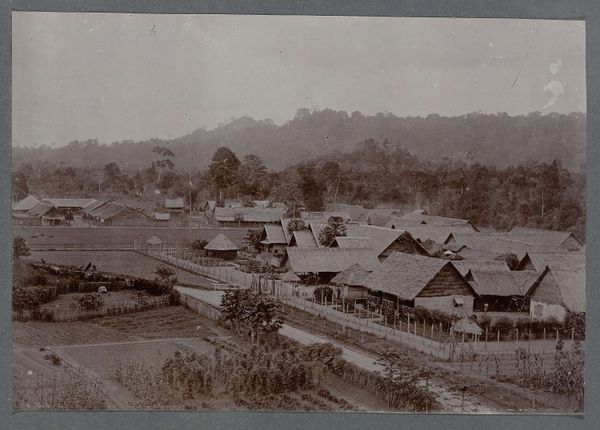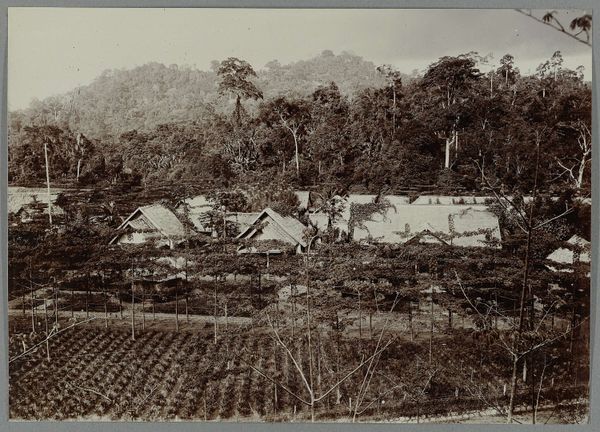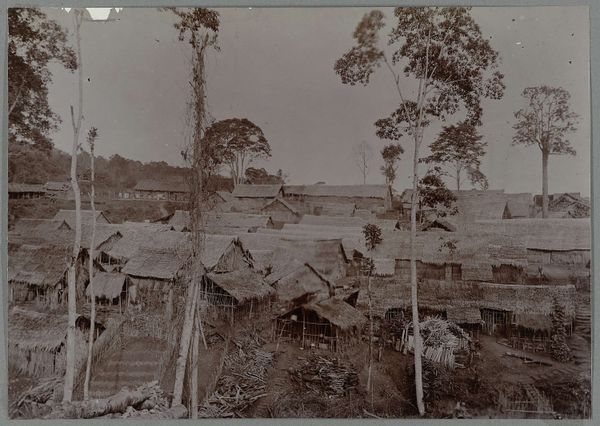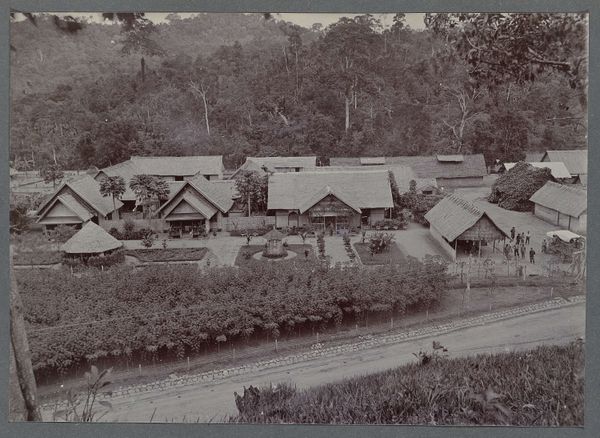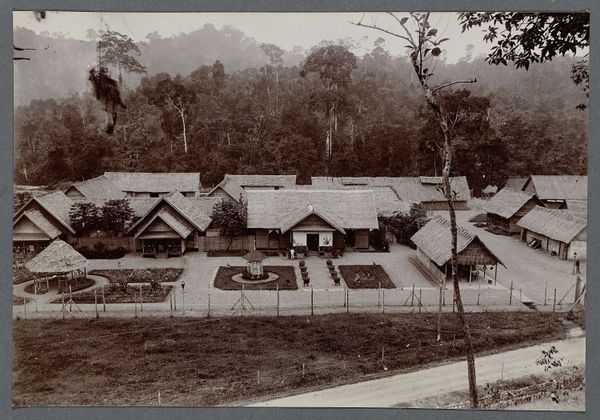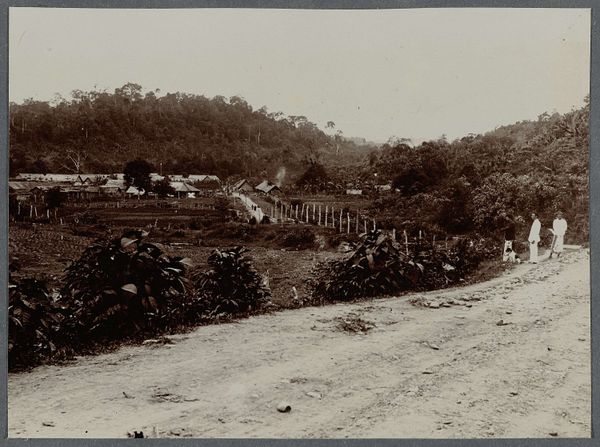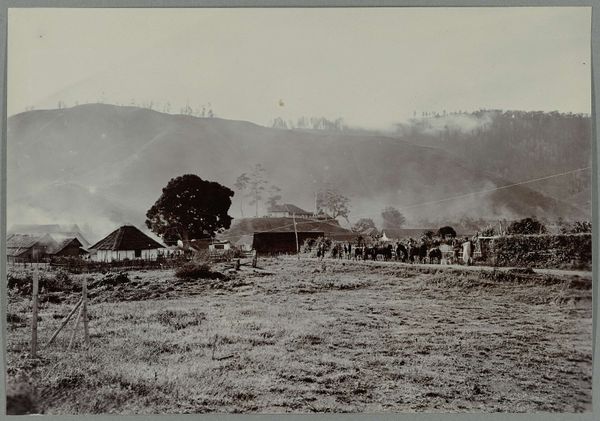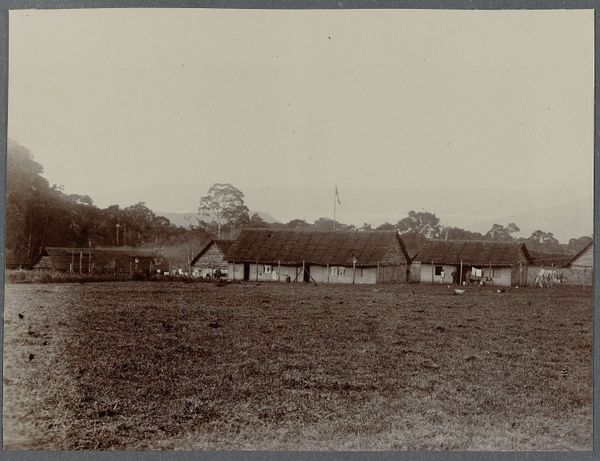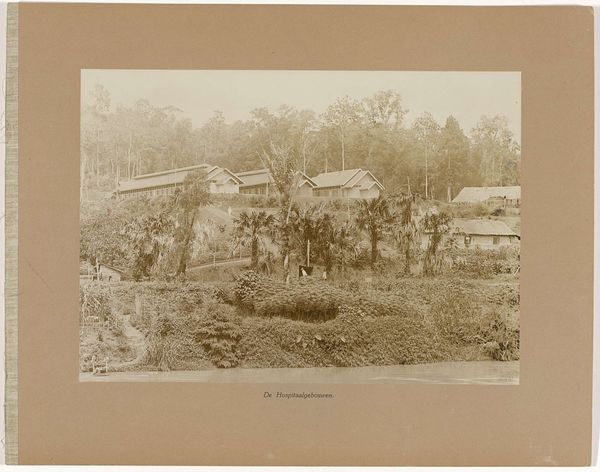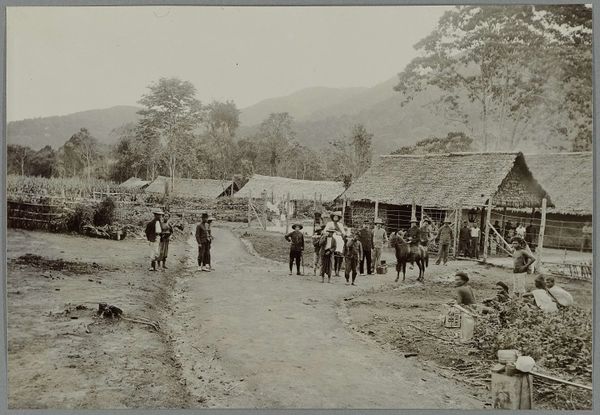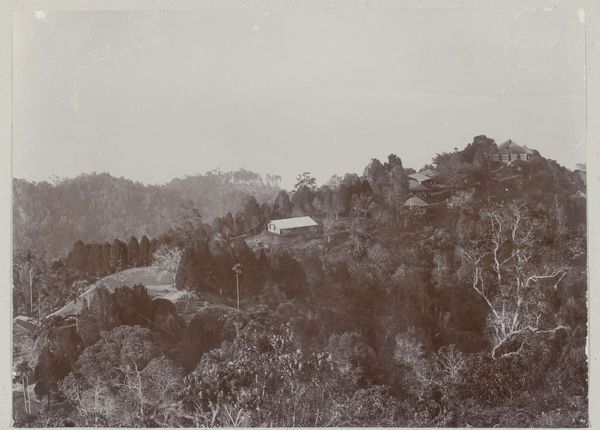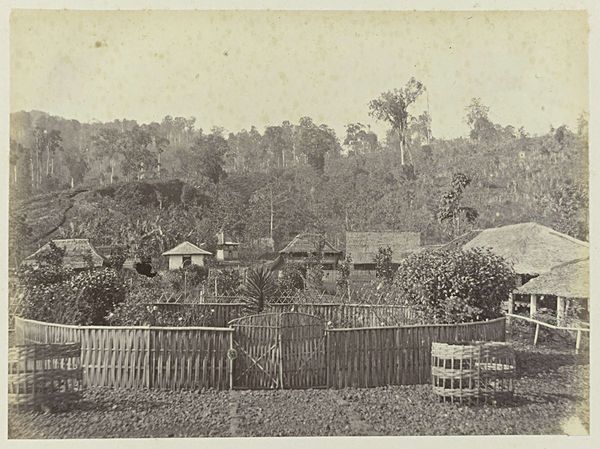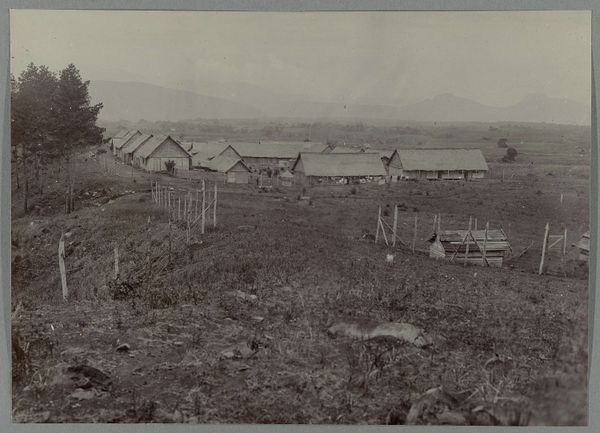
photography
#
landscape
#
indigenism
#
photography
Dimensions: height 138 mm, width 200 mm
Copyright: Rijks Museum: Open Domain
Editor: Here we have an old photograph, "Bivak te Krueng Seumpo," taken sometime between 1903 and 1913. The artist is listed as anonymous. What strikes me immediately is how still and quiet it feels, even though it depicts a whole community. It seems both carefully planned and completely organic. What do you see in this image? Curator: Ah, a hushed world captured in sepia tones... I see a conversation between order and wilderness. The cultivated fields and tidy rows of houses speak of humanity's effort to shape its environment. And then the encroaching jungle, a riot of greens hinting at forces untamed and, dare I say, untameable. The soul expands just considering the tension within. Doesn’t it evoke a question of belonging? Editor: Absolutely. There's a real contrast between the orderly settlement and the overwhelming natural landscape. I was wondering if this balance alludes to cultural or colonial themes present in Southeast Asia during that time? Curator: A brilliant question! Photography then, especially in colonial contexts, became this odd dance of documentation and domination. Images were powerful tools for defining "otherness." Yet, I like to wonder if the artist was subtly suggesting that nature still had the upper hand, even amidst imposed order. Notice the way the jungle blurs into mist; perhaps a gentle assertion that some things will always defy control? Editor: I never considered the idea of the mist doing exactly that. Curator: It is what art can be! What once was fact becoming an invitation for interpretation and thought, eh? Editor: I will think of this image a little differently from now on. Thanks for making it click! Curator: My absolute pleasure. Every photo holds echoes, whispers for us to listen to if we try hard.
Comments
No comments
Be the first to comment and join the conversation on the ultimate creative platform.
